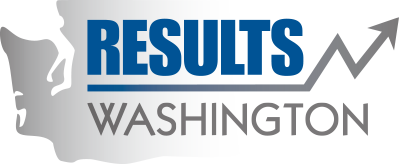Archived: Average emissions of greenhouse gases
Efficiency in the way we move people and products is crucial to reducing Washington's greenhouse gas footprint. Finding different ways to to get from place to place, using high-mileage vehicles, using improved lower-emissions fuels and alternative technology vehicles, reducing congestion and engine idling, living closer to where we work or telecommuting, and reducing overall trips are all part of a cleaner transportation future.
Our efficiency of travel today is certainly better than just a few years ago. Engines are cleaner, cars get better gas mileage, and more people are pursuing alternative ways to move around. But in aggregate, our transportation methods still generate more than one pound of carbon dioxide for each mile traveled. In 2013, Washingtonians traveled more than 57 billion miles. The knowledge that each mile we travel places more than a pound of carbon dioxide into the atmosphere can be instructive to our efforts to reduce emissions and lead to new ways to reduce emissions.
- The Department of Transportation is using a three-pronged approach: Operating efficiently; Managing Demand; and as a last resort, Adding Capacity. Examples of these strategies include ramp metering, active traffic management, increasing transit/car pools and van pools, as well as improved public information systems to help people choose the easiest and fastest ways to get to their destinations.
- Ecology implements Washington's Clean Car standards to assure that only the cleanest new cars are sold in Washington.
- Tax incentives are increasing the share of electric vehicle sales out of all new vehicles sold in Washington, and efforts are underway to expand the network of electric vehicle charging stations around the state.
- Incentive programs are funding research and development of fuels from different sources and feed stocks, including seed crops, agriculture and forest waste products, and natural gas from landfills and animal feed operations.
- Strategies are being deployed to streamline goods movement and reduce congestion on highways.
- Use mass transit or carpool whenever possible. Organize your errands to reduce the number of trips. Consider bicycling or walking.
- When possible, choose an alternative work schedule to avoid peak travel and congestion. Consider telecommuting. Reduce engine idling.
- Consider purchasing a higher-mileage or alternative technology/alternative fuel vehicle when buying a new car.
- Consider living closer to where you work or telecommuting.
